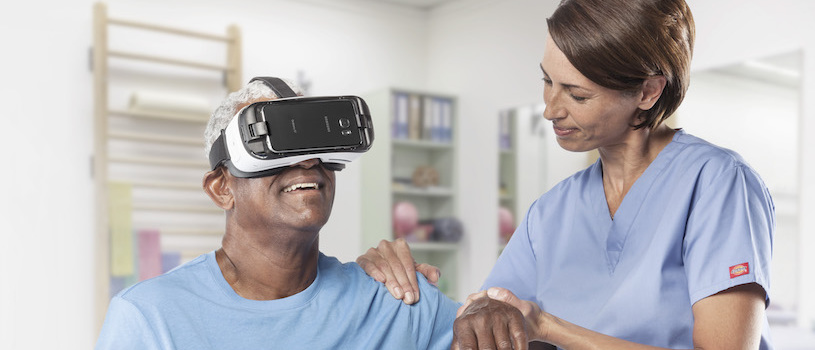Pain is complicated. It has both a physical and psychological side.
Hitting your finger with a hammer causes immediate and intense physical sensation. However, anxiety, as you wait for a doctor’s test results, causes psychological pain. Either type of pain alone causes distress. When multiple pain sources combine, the intensity can multiply.
But it’s not just complicated for the patients themselves. In the U.S., it has also become a healthcare emergency.
Addressing a Person’s Pain Level Has Become a Healthcare Crisis
Pain is pervasive. According to the National Institutes of Health, nearly 40 million American adults experience severe levels of pain, severe enough to impact their overall level of health. The numbers are likely much higher if acute pain (pain lasting less than six months) is factored in. The cost of pain management extends beyond treatment — there’s also the costs of lost productivity and wages.
Starting in the early 2000s, it became common to treat pain by prescribing opioids. In 2016, prescribers wrote 66.5 opioid and 25.2 sedative prescriptions for every 100 Americans. The multi-year history of over-prescription had the unintended consequence of addiction, to the point where the Centers for Disease Control and Prevention (CDC) asked healthcare providers to find other pain management solutions.
Create a VR Healthcare Pain Management Program
Explore the key drivers of using VR for pain management and get tips for implementation. Download Now
That is why when healthcare professionals find a promising way to treat pain, it provides them hope for their patients. Recent studies have shown that virtual experience offers a non-pharmaceutical pain management solution. The results have been positive during initial clinical trials.
How Virtual Experience Relieves Pain
Virtual reality (VR) has proven to be a promising way to treat pain in all its forms (procedural, acute and chronic) and states (physical and psychological).
How does a virtual experience help relieve pain?
While there is still a lot of research to be done to truly discover how VR works to reduce pain, a few recent experiments offer insight. Dr. Brennan Spiegel, director of Cedars-Sinai Health Services Research has conducted studies into the phenomenon and attributes it to what he calls “immersive distraction.”
“We believe virtual reality hijacks the senses, but in a good way.” He says it “stops the mind from processing pain, offering a drug-free supplement to traditional pain management.”
Dr. Spiegel explains: “We’ve tested VR for back pain, shoulder pain, foot pain, pain from infections, post-surgical wound pain and severe abdominal pain, among others. It has been surprising to observe that VR seems to work on all types of pain with seemingly equal efficacy […] this doesn’t mean that VR works for everyone, but when it works, it really works.”
Using Samsung Gear VR and therapeutic content from AppliedVR, Dr. Spiegel noted that they found a preliminary 24 percent reduction in pain after approximately 10 minutes, regardless of the specific type of pain.
VR Software for Healthcare Users
Virtual experiences designed for healthcare, out of necessity, differ from other VR environments. In a healthcare setting, patient movement might be constrained because they are attached to IVs or other machines. They may also be impaired for the reason they are seeking healthcare in the first place, because of sickness, injury or recent surgery. Motion and speed also must be considered when choosing content. Patients who are ill may be more inclined to motion sickness or nausea. The position of the patient can also affect their enjoyment of the content since they may be seated or lying down.
Over the years, content creators have gradually learned these lessons and gotten smarter about the content they create for use by the healthcare sector. When it comes to pain control, there is yet another consideration. As mentioned above, it’s believed the key to a successful virtual experience for pain management is distraction. To work as a pain management solution, the content can’t have frequent stops, starts or lags. It must be a free-flowing program that completely immerses the patient in a new, relaxing environment.
For example, in Spiegel’s studies, patients could choose an option of a scenic helicopter ride over Iceland or the chance to swim with whales. One of the earliest VR games used as a distraction from pain is SnowWorld, in which burn patients undergoing wound debridement play games involving snow. Patients who played the game while undergoing these painful sessions reported up to 50 percent less pain than when using other distraction techniques like music or non-VR video games.
Pain remains complicated, but its treatment may become less so. VR presents a new frontier that offers both hope and relief to patients and healthcare providers.
Explore cutting-edge healthcare technology in more depth by checking out our full line of healthcare solutions.








